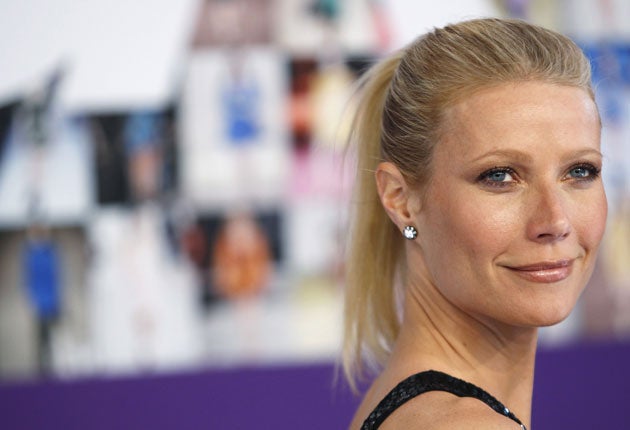Sunshine: Bone of contention
Does a daily dose of sunshine really offer hope for the millions who suffer from osteoporosis? Alice-Azania Jarvis reports

On her blog last week, the Oscar-winning actress Gwyneth Paltrow revealed that she "had the beginning stages if osteopenia" and has been advised to increase her vitamin D levels as a result. "My levels turned out to be the lowest they had ever seen," she claimed. "I went on prescription-strength levels and was told to spend a bit of time in the sun." It's a curious bit of advice; after all, the need to avoid exposure to ultraviolet rays is perhaps the most ubiquitous health message after that of not smoking. In fact, a moderate amount of sun-exposure can do a world of good – as Paltrow now knows only to well.
Rather than being a "disease" or "condition", osteopenia refers to a range of bone densities that are below average, but not as low as in osteoporosis, to which it's frequently seen as a likely precursor. A range of factors may lie behind the diagnosis; since our bones' renewal and repair slows with age, both conditions are most common in post-menopausal women and in elderly men with low levels of testosterone. In the UK, one in two women and one in five men over the age of 50 will break a bone mainly as a result of osteoporosis.
But the possibility of weak bones is by no means limited to the over-50s. So what can be done to prevent it? Genetic predisposition plays a significant role in determining who will have low bone density, as do lifestyle factors: heavy drinking, smoking and caffeine consumption are all best avoided. Low body weight, low-calcium diets or a history of eating disorders can contribute, too – as can excessive exercise and, more commonly, a sedentary lifestyle.
Much has been made of the link with low vitamin D after Paltrow's diagnosis – and, while not necessarily the overriding cause behind osteoporosis, it is, says Thomson, a common problem: "Vitamin D is a very important player and, yes, we get it from the sun. It's a very difficult message as we don't want to encourage people to get outside and fry, but 20 minutes on the hands and face in the summer months is a good thing."
Inevitably, living in cold climes, British women struggle with this more often that their southern-hemisphere counterparts: "In certain latitudes exposure is a lot more difficult. Whether that has a knock-on effect on osteopenia and osteoporosis has yet to be shown, but having the correct Vitamin D levels is definitely important."
Although it's advisable to adopt early avoidance techniques, specialists don't generally recommend bone density testing until later in life, since most medical treatments aren't licensed below certain ages. In Paltrow's case, her bone-scan followed surgery that she was undergoing at the time.
Once diagnosed, osteopenia is unlikely to be treated with drugs. Instead patients are advised to stick to a balanced diet and engage in regular weight-bearing exercises such as running, aerobics, skipping. All these are excellent preventive measures, too. If the condition progresses to full-blown osteoporosis, a range of treatments become available. Hormone replacement therapy used to be the favoured method, but in recent years there's been a shift towards phosphonate-based drugs.
Treatments have improved drastically in the past decade, leading to a notable enhancement in the quality of life for those diagnosed with osteoporosis. "We can reduce the risk of broken bones in osteoporosis patients by 50 per cent," says Thomson.
"The drugs particularly aim to prevent injury to the hip and spine. Halving the risk of bone fractures really is significant – there is a lot to be positive about."
The inside story
* Approximately three million people in the UK have osteoporosis, which means literally "porous bones".
* One in two women and one in five men over the age of 50 will break a bone as a result – most commonly their wrist, hip or spinal bones.
* Diet can make an enormous difference to one's bone health. High calcium foods are particularly beneficial, including dairy, tofu, leafy green vegetables and tinned fish (sardines and anchovies).
* Vitamin D is vital to help the body absorb calcium. Oily fish, eggs and some liver as well as sufficient sunshine can all help with this.
Join our commenting forum
Join thought-provoking conversations, follow other Independent readers and see their replies
Comments
Bookmark popover
Removed from bookmarks